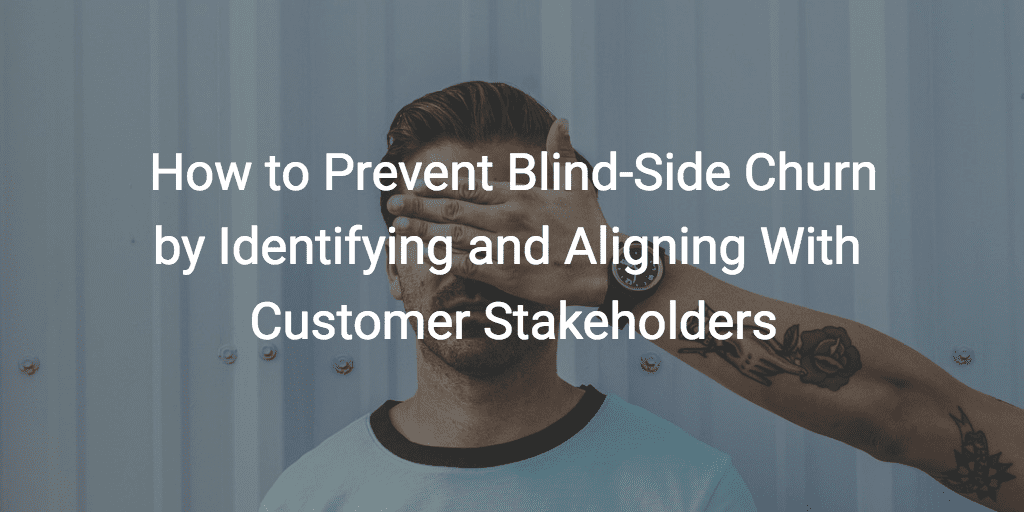I frequently hear from customer success and sales leaders that two of the most common reasons for churn or downsell (revenue compression) are executive/sponsor change and lack of perceived value (for your product/service).
When I dig into this some more, the most actionable root causes turn out to be a few things:
- We are not aware of the shifting priorities at our customers’ businesses (hence we cannot keep up with change in what “value” means to them).
- We are not top of mind with executives.
- We are not talking to multiple levels and key influencers (e.g., IT) within the customer org.
- We are blindsided when sponsors leave (especially in our volume or SMB segments).
So I decided to get tactical by sharing our perspective on a framework for Stakeholder Alignment (it’s called the Executive Sponsorship program in many companies) and how to operationalize it.
“As your customers change priorities and shift strategies, maintaining alignment with their executives and decision makers becomes paramount. With Stakeholder Alignment, Gainsight helps you set up a regular process for executive check-ins, monitor when there are organizational changes, and keep an eye on stakeholder sentiment over time. We need to keep the #humanfirst approach to keep interactions as personal and contextual as possible while automating the process to remove the busy work”
If done right, this approach can not only help prevent churns and downsells, but also open up opportunities for expansion (cross-sells and upsells).
There are six recommended steps to operationalize the Stakeholder Alignment process:
- Map out the key personas at your customers that include sponsors/buyers, influencers, administrators/power users, and adoption champions.
- Identify the sponsor or “buddy” from your company that maps one-to-one to these key personas.
- Operationalize a regular cadence of outreaches from the buddy to the key personas.
- Set up alerts when a sponsor leaves the company and a playbook to mitigate the risk.
- Document notes from these outreaches for future reference.
- Track these outreaches as a health score measure that shows progress over time.
1. Map out the key personas at your customers
- Align with Sales on the key personas—we recommend starting with:
- CEO/CFO/COO – If they are critical to your buying decision
- Sponsors/buyers – Typically SVP/VP of functions that tend to use your product/service.
- Influencers – CIO/IT, Operations
- Administrators/power users
- Adoption champions – Tend to be Managers/Directors of functional teams who can drive accelerated adoption of your offerings
- We recommend adding a “persona” field to the Contacts object in your CRM.
- Sales assigns these personas to key contacts in the CRM at contract signing.
- Onboarding/Professional Services validates that these assignments are still true during the onboarding phase, if applicable.
- CSM/AM teams then maintain these assignments throughout the relationship with the customer.
- Add these key personas to the Customer360 view in Gainsight so everyone has access to who these people are.
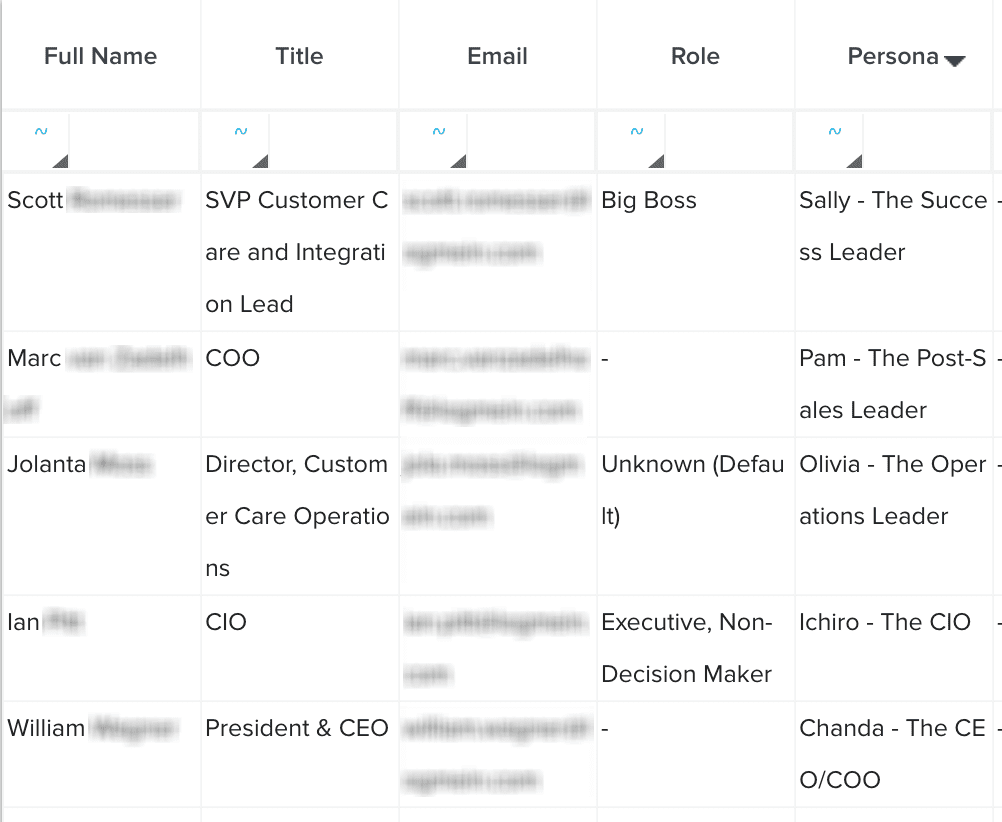
2. Identify the sponsor from your company that maps to these key personas
- Determine your typical approach, by customer segment, for which key personas should be matched to which buddies (e.g., Chief Customer Officers of mid-touch customers are matched to our VP of Customer Success).
- I recommend that your CEO or COO be mapped to sponsors/buyers at your largest enterprise customers.
- For your mid-market and SMB customers, you might choose to have managers or directors on your team be assigned as buddies for sponsors/buyers to get more scale.
- For all new customers, use a Rule to populate the default buddies into a field on Customer Info (one field per customer persona).
- Use the Attributes section in the C360 to update these fields as necessary (e.g., if there are pre-existing personal relationships).
- Add report of Contacts to C360 showing list of customer key personas.
3. Operationalize a regular cadence of outreaches from the buddy to the key personas
- CSMs/AMs receive Calls to Actions (CTAs) in Gainsight on a regular cadence (immediately for new stakeholders), with a templatized email (using Email Assist) to send a ghostwritten email to the buddy.
- They add more context about recent progress made, key priorities to be validated, etc.; this allows for the personal interaction while adding automation and efficiency to the process.
- You can also include recent research reports, blogs, etc. which add value for the receiver of the email.
- The email sent is tracked in Timeline for historical context.
- The buddy sends the email to the customer contact from their email inbox.
- The goal is to get time for a quick call or meeting.
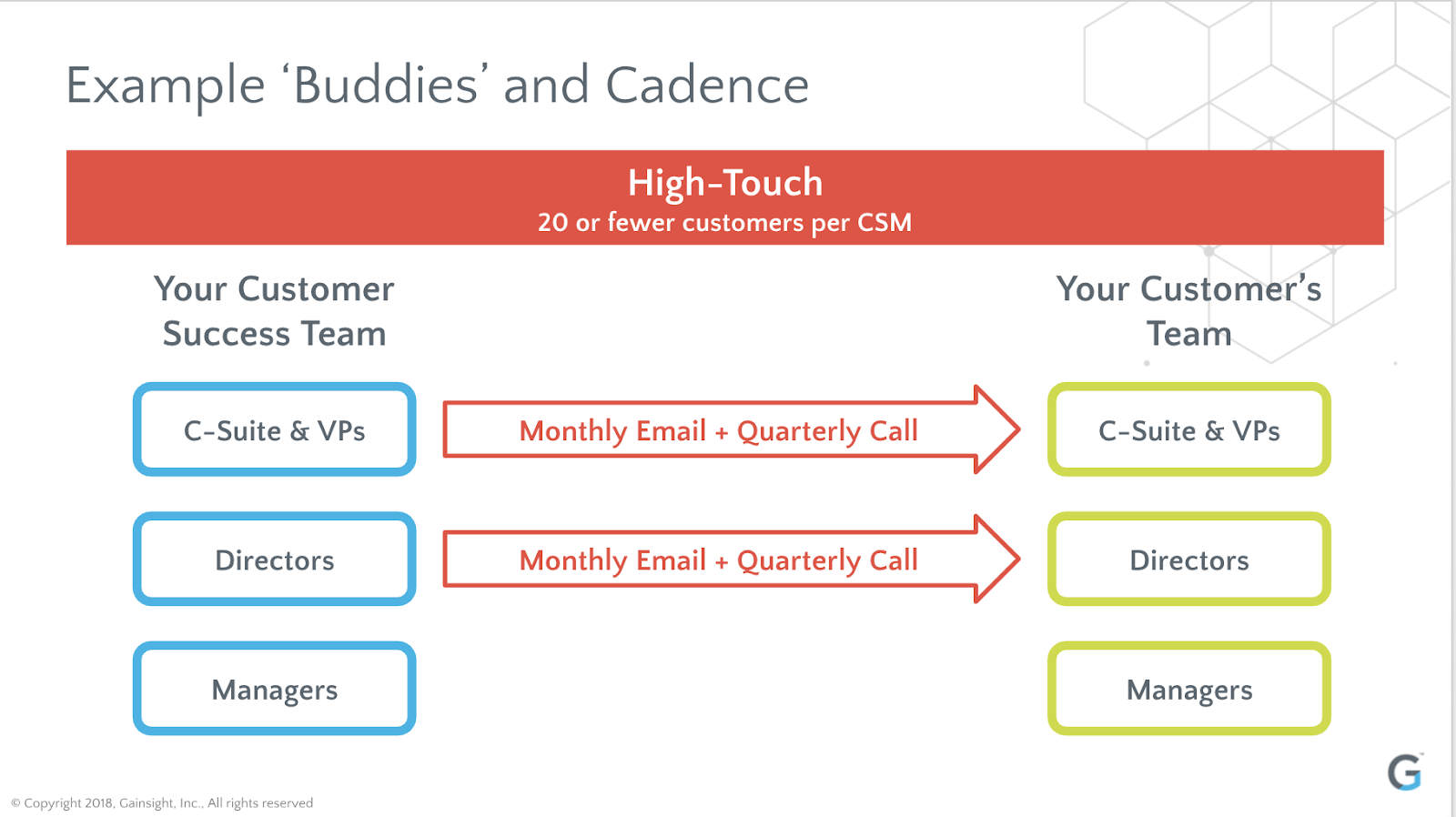


4. Set up alerts when a sponsor leaves the company and a playbook to mitigate the risk
- Monitor key contacts: All of us struggle with keeping contacts lists clean in the CRM. So identifying the key contacts/personas and just focusing on a handful of contacts makes the process more palatable.
- Know when they change their titles, companies, or locations: Using Sponsor Tracking functionality in Gainsight, you will be alerted when key contacts make changes to their LinkedIn profile.
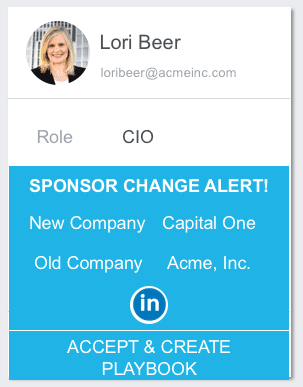
5. Document notes from outreaches for future reference
- Log Timeline updates with executive priorities, feedback, and correct persona boxes checked. The priorities discussed on the call or meeting help the CS team in effective Success Planning processes.
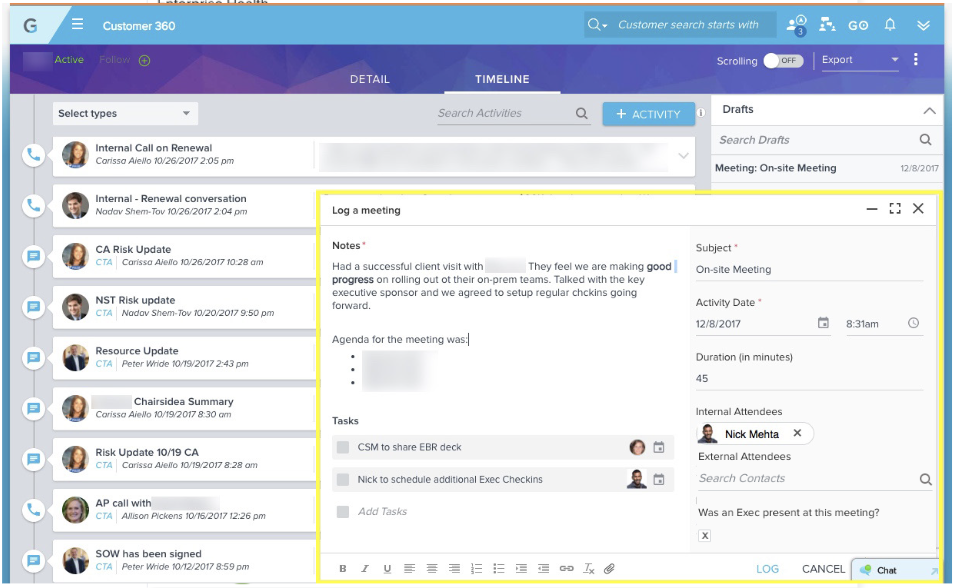
In an upcoming release, we’re launching the ability to “bcc to Timeline” where you can easily send specific emails to be captured in Timeline.
6. Track these outreaches as a health score measure that shows progress over time
- Create an Engagement score as part of your health score rubric that measures how often you connect with key personas at your customers.
- Track weekly improvements in the Engagement score.
- Use one-on-ones to identify blockers to improving the score.

If you don’t use our Stakeholder Alignment framework, I’m curious to hear what you are doing instead in this foundational aspect of Customer Success. Please leave a comment below and let us know how you are managing stakeholder engagement.
